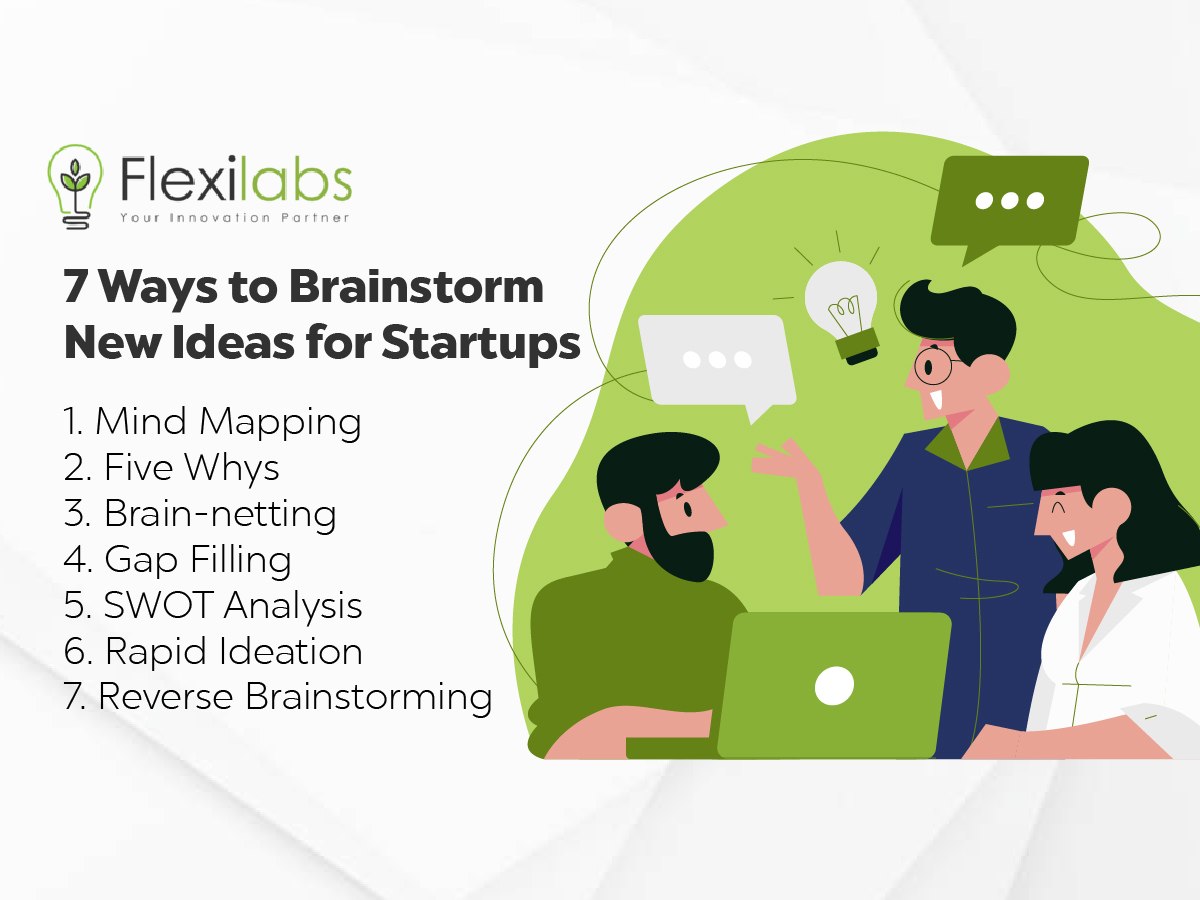Many startup founders would agree that one of the most complex parts of establishing a new company is creating a unique and perfect idea. You can use different techniques to improve and develop your startup idea, but nothing beats a good brainstorming session.
In startups, brainstorming is a great way to develop new ideas for product services or improve current ones. It is often accomplished among small groups or external VIPs to understand your business better.
Likewise, this article will teach you the top 7 Brainstorming techniques that you can use to expand your startup ideas and strategies.
What is Brainstorming?
Teams use brainstorming to generate ideas and share knowledge to solve a problem. Startup business owners can brainstorm through a spontaneous contribution of thoughts and opinions from group members. Similarly, a brainstorming session may take some process and steps to be successful in devising solutions to challenges.
Why is Brainstorming Crucial in Businesses?
Brainstorming has a lot of benefits for the startup itself and its people. It gives employees time to share their innovative ideas. It encourages them to take responsibility for the company and its future. Brainstorming helps them feel that their opinion matters, thus increasing morale and productivity.
Moreover, brainstorming increases employees’ level of thinking and help them develop critical thinking skills, which can help solve a problem and decide when the need arises. The more your people think of a solution, the more ways they can become firm in handling any issues.
Similarly, brainstorming ideas for startups improves team relationships and inclusion. Instead of the traditional way of decision-making with only one person taking all the pressure to come up with ideas, brainstorming allows employees to work together.
7 Types of Brainstorming techniques, perfect for a small team

1. Mind Mapping
Mind mapping is a technique that can aid in brainstorming ideas for startups. It is a diagram of words, pictures, or concepts around a central keyword or view. Similarly, it is sometimes called spidergrams, brainwriting, and mind drawing.
Moreover, this technique was created by Tony Buzan in the 1970s and was designed to solve the problem of how to get more out of one’s brain through better organization and creative thinking skills. , Buzan’s books on mind-mapping have sold over 10 million copies worldwide.
The goal of mind mapping is to generate new ideas by exploring one’s thoughts and memories in different ways and directions with the help of visuals such as colors, images, or symbols.
2. Five Whys
The 5-why technique is a problem-solving method that identifies the root cause of an issue. The technique is a simple process of asking “why” five times. This technique aims to brainstorm ideas for startups by asking questions with every person until the person asking the questions finds the root cause of the problem and solves it. It’s an excellent way to produce new ideas, eliminate bad ones, and ensure they have not missed anything significant in their analysis.
3. Brain-netting
Brain-netting is a strategy for generating ideas and solving problems. It often involves brainstorming with people from different backgrounds and expertise. Brain-netting can be done in person or virtually, but it’s most effective when the group is in the same room.
The idea behind brain-netting is that it’s more productive to work with a diverse group of people than one person who has the same background as you do. Brain-netting is an excellent technique to brainstorm ideas for startups. It lets them interact with experts in their fields and industry. These experts can provide valuable insights from their perspective, leading to innovative solutions for you.
4. Gap filling
Gap filling is a technique that is used to brainstorm ideas for startups. The gap-filling approach is coming up with ideas for new business ventures. Moreover, this method usually involves writing down all the possible gaps that could fill to make an idea work. It includes holes in marketing, product development, or testing startup ideas.
5. SWOT Analysis
A SWOT analysis identifies the strengths, weaknesses, opportunities, and threats internal and external to an organization. It is one of the most common techniques to Brainstorm ideas for startups. The SWOT analysis helps identify what factors favor the company and those that are not.
Likewise, this technique is excellent in strategic planning and identifies the organization’s strengths, weaknesses, opportunities, and threats. It is used alongside other decision-making tools such as PESTLE analysis.
6. Rapid Ideation
Rapid Ideation is a technique for generating many ideas in a short amount of time. It is a technique developed by Alex Osborn and Bob Eberle in 1953.
Similarly, this technique is excellent for brainstorming for startups to generate ideas as quickly as possible, without criticism or outside judgment. The goal is to produce many ideas to choose from to select the best one.
7. Reverse brainstorming
Reverse brainstorming is a technique used to generate ideas by considering what might go wrong. Innovative startup companies often use this technique to brainstorm ideas for startups and create new products.
Furthermore, reverse brainstorming for startups can generate innovative solutions by first considering the consequences of not solving the problem. It seeks to find solutions for issues or challenges not addressed in the market. Likewise, startups can do reverse brainstorming in various ways, such as through a physical workshop or online tools.
Conclusion
As discussed above, brainstorming aims to generate tons of ideas and innovations that can help you attain your goals as a startup. However, there are circumstances where you think you are not creating great ideas from brainstorming. The chances are that it is a great idea, but you might think it is unreachable or unrealistic.
In this case, always remember to consider any idea that comes to your mind or your team. Ensure no judgments or biases between you and carefully evaluate each idea.
When you finally come up with your idea and need to validate it, contact Flexilabs! We offer startup incubation programs for starting companies in Australia. Contact us now!

